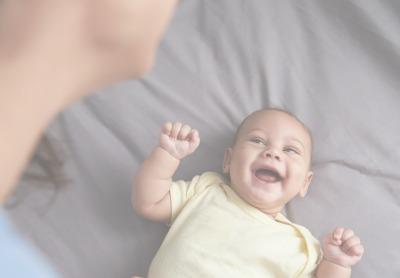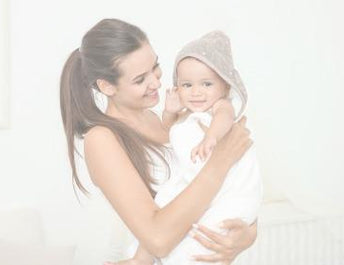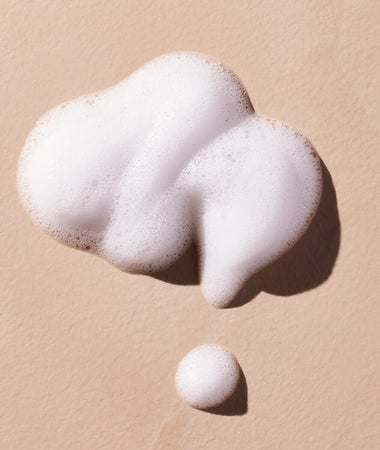
Baby Dandruff: Signs, Symptoms, Causes, And Treatments
Young children have extremely delicate, sensitive skin. This makes it easy for their skin to become dry and irritated. When dry, flaky skin develops on an infant’s head, it’s known as baby dandruff.
While baby dandruff can look like a serious condition, it’s actually nothing to be alarmed about. Many babies develop dandruff at some point during their infancy. It’s not a sign of poor hygiene or any kind of illness. Baby dandruff normally goes away within a week or so.
In this post, the baby experts at Mustela will go over the signs, symptoms, and causes of baby dandruff. Then we’ll explain eight easy ways to care for your little one’s dry scalp.
What’s Baby Dandruff?
Officially called seborrheic dermatitis, baby dandruff is more or less the same thing as the dandruff adults may develop — dry, flaky skin on your little one’s scalp.
However, there is one major difference between baby dandruff and the kind that adults sometimes get. For babies, dandruff may lead to a condition called cradle cap.
Cradle cap is a severe form of baby dandruff that results in crusty patches of yellow or red irritated skin. Like baby dandruff, cradle cap is perfectly normal. Many infants develop cradle cap. In fact, one study estimates that as many as 70 percent of infants will develop cradle cap at some point in the first three months of life.
Baby dandruff and cradle cap are not contagious, don’t cause your baby any pain or discomfort, and generally go away within a week or two.
With all of that said, it’s important to note that baby dandruff won’t necessarily develop into cradle cap. It may just remain in its basic state of dry, flaky skin on your little one’s scalp.
Symptoms Of Baby Dandruff
There are several different signs that your little one has dandruff. Here are some of the most common symptoms:
- Flaky, dry skin on your baby’s scalp
- Yellow, red, or pink coloration on and around your baby’s head
- Dry patches that may be oily, scaly, crusty, or rough to the touch
While baby dandruff is unsightly, remember that it hardly ever causes any discomfort. Baby dandruff is not contagious, is not caused by poor hygiene habits, and is very common in children under one year of age.
At this point, you might be wondering how to tell baby dandruff apart from other skin conditions, like eczema, a rash, or ordinary dry, peeling skin.
First off, all of these other skin conditions will not form exclusively on your baby’s head. They’re likely to appear all over your little one’s body, including their arms, legs, and torso. Baby dandruff, on the other hand, will be found only on your little one’s scalp.
Second, many other skin conditions, like heat rash and hives, will appear very suddenly. This will help you to eliminate baby dandruff as the cause.
Lastly, most other skin conditions will cause your baby noticeable discomfort, while baby dandruff will not. If your little one has dry, red skin and seems extra fussy, dandruff might not be the culprit.

Causes Of Baby Dandruff
The very short explanation is that dry skin causes baby dandruff. But this raises the question: what causes the dry skin that leads to baby dandruff?
There are a number of factors that can contribute to dry skin and, thus, baby dandruff. Here are a few examples:
- Sunburn on your baby’s scalp
- Using a harsh shampoo or too much shampoo
- Not rinsing your baby’s head well enough after shampooing
- Extreme weather
- Excess sebum on your baby’s scalp
Some medical experts also believe that a yeast called malassezia may lead to baby dandruff and cradle cap. This has not yet been confirmed by research.
It’s also important to note that other skin conditions, such as eczema and psoriasis, can sometimes contribute to baby dandruff.
8 Easy Ways To Care For Your Baby’s Dandruff
Now that we’ve covered the symptoms and causes of baby dandruff, let’s go over eight easy ways to care for your little one’s dry scalp.
1) Keep Baths Short
It’s crucial to follow a daily hygiene routine with your little bundle of joy. However, giving your baby long baths every day can actually dry out their delicate, sensitive skin and lead to baby dandruff.
It’s perfectly fine — and beneficial, even — to give your little one a daily bath, as long as you’re keeping the baths short and using the right baby-friendly products.
Try to keep baths to no more than 10 minutes, even if your little one has fun playing in the tub. Also, make sure the water temperature is around 98 degrees Fahrenheit (give or take one or two degrees). This temperature is best for keeping your child’s skin healthy.
Use baby-friendly products that are made with natural ingredients and specially formulated for your little one’s delicate skin. Mustela offers a variety of cleansers and other safe bath-time products to take extra special care of your little one’s skin.
If you prefer, you can bathe your child just three or four times per week. As long as you’re changing your baby’s diapers the right way, one bath every other day won’t lead to any hygiene issues.
Remember to use a gentle micellar water product, such as Mustela’s No-Rinse Cleansing Water, that’s safe and effective for your baby to cleanse your child’s skin on days when you do not bathe them.
2) Use Gentle, Baby-Friendly Shampoo
It’s essential to use a gentle shampoo that won’t dry out your little one’s scalp. To care for your baby’s dandruff or cradle cap, try Mustela’s Foam Shampoo For Newborns. This ultra-gentle shampoo is specially formulated to cleanse your baby's hair and scalp while softening and rinsing away flakes associated with cradle cap.

3) Don’t Use Conditioner
While conditioners provide nutrients and hydration to adults’ hair and scalp, they can actually be harmful when used on infants. This is because the ingredients in conditioning products for adults tend to be too strong for a child’s delicate skin and scalp.
It’s best to avoid using adult conditioners on your baby’s hair. This is true whether or not your child has a case of baby dandruff. Instead, opt for safe alternatives like Mustela’s Gentle Shampoo or Foam Shampoo for Newborns.
4) Apply Baby Oil To Your Little One’s Scalp
Keeping your child’s scalp hydrated is an essential step in treating baby dandruff. Mustela’s Baby Oil will safely moisturize your baby’s head and soothe your little one’s dry scalp. Simply apply a few drops to your baby’s head and gently rub it in with your fingertips.
5) Brush Your Baby’s Head
Brushing your little one’s head is another effective way to care for baby dandruff. Make sure that the brush’s bristles are extremely soft.
It’s best to brush your little one’s head after you’ve applied baby oil. The baby oil will ensure that your baby’s head is well-hydrated while also loosening up some of the flaky patches of skin on your child’s scalp. Then, a gentle brushing can delicately rub off some of the dead, flaky skin.

6) Give Your Baby A Gentle Head Massage
A gentle head massage will comfort and soothe your baby while also caring for their baby dandruff.
As your fingertips move along your little one’s head, some of the flaky, dead skin will become detached and fall off. This allows your baby’s newer, healthier skin cells to take the place of the skin that has flaked off.
Of course, it’s crucial to be extremely careful and delicate whenever touching your baby’s head. Since your infant’s skull is not yet fully developed, you must be as gentle as possible. Using only your fingertips, simply rub your baby’s scalp. Don’t press down with your fingers or apply any pressure.
7) Use A Humidifier
A humidifier will help prevent your baby’s skin from drying out, including their scalp. This, in turn, will help to prevent and treat baby dandruff. Humidifiers will also allow your baby to breathe a bit easier when they have a cold.

8) Consult A Doctor
If it seems like your baby’s dandruff is causing them discomfort or if the dandruff lasts more than a week, it’s important to consult a pediatrician. The doctor may choose to prescribe an antifungal cream or another ointment to help treat your little one’s dandruff.
Important note: never give your baby any medications — whether prescription or over-the-counter — without talking to a doctor first.
At the end of the day, baby dandruff is nothing to worry about. It might be a little unsightly, but it’s a normal condition that isn’t causing your little bundle of joy any discomfort. With the tips above and gentle shampoos from Mustela, your baby’s dandruff will heal before you know it.
Suggested Articles

Cradle Cap: Causes, Prevention, And The 10 Best Treatment Methods

How To Care For Cradle Cap: Top Tips

Dry Scalp Or Cradle Cap: What's The Difference?
Get tips, news
and exclusive offers






